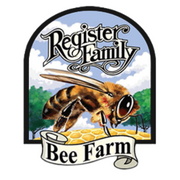
Loved for its mild, sweet taste and floral aroma, tupelo honey is one of the world's most prized honey varieties. However, as a resource that can only be harvested in the northern Florida and southern Georgia regions, it’s also one of the rarest kinds of honey out there. Whether you’re a fan of this treasured product or have yet to delight in its unique characteristics, here’s a closer look at how tupelo honey is made.
What's Unique About the Tupelo Tree & Honey?
This honey comes from the blooms of the white tupelo trees. These trees only flourish in the swampy areas along the Apalachicola, Chipola, and Choctawhatchee rivers, which run through part of the panhandle of Florida.
Beekeepers place hives as close as possible to swamp basins to ensure honeybees only gather nectar from the white tupelo bloom. Hive location is extremely important to the purety of the honey, and hives are sometimes even brought in by boat and situated on platforms along the riverbanks or in the swamp. These platforms help protect hives from flooding activity.

Tupelo honey is renowned for its delicious, buttery taste that doesn't overwhelm the foods it's used in, making it a favorite of chefs. It also won't crystalize like most other varieties, and because of its unique sugar ratio, it is lower on the glycemic index than other honeys.
Why Is Tupelo Honey Difficult to Harvest?
In addition to swamp proximity, seasonal weather can also introduce challenges for beekeepers. Spring thunderstorms, for example, may knock floral blooms off the trees, giving bees fewer options for gathering nectar. Tupelo flowers bloom for a brief period in the spring, usually between mid April and early May. The bees are able to collect nectar from the flowers for no more than a couple of weeks, making the resulting honey an especially rare delicacy.
Just as with other forms of honey production, worker bees collect nectar from the flowers and bring it back to their hives. The nectar is passed between house bees, who “chew” it until its enzymes and other properties change. Eventually, the nectar becomes a sticky honey substance and is stored in the hives’ honeycombs.
After the first week of May, beekeepers swiftly collect honey from the hives to ensure it's made purely from tupelo flower nectar. Pollen testing is typically used to verify a collection’s purity.
If you’re ready to indulge in the smooth sweetness of tupelo honey, stop by Register Family Farm. Built by generations of beekeepers, this family farm is known for its impressive selection of bee products—including tupelo honey sourced from the Freeport, FL region. 2021 was a bountiful harvest compared to most years, with two weeks of tupelo blooming. To learn more about their premium raw honey, beeswax candles, bee pollen, and other authentic goods, visit this retailer online or call (850) 392-7404.
About the Business
Have a question? Ask the experts!
Send your question

